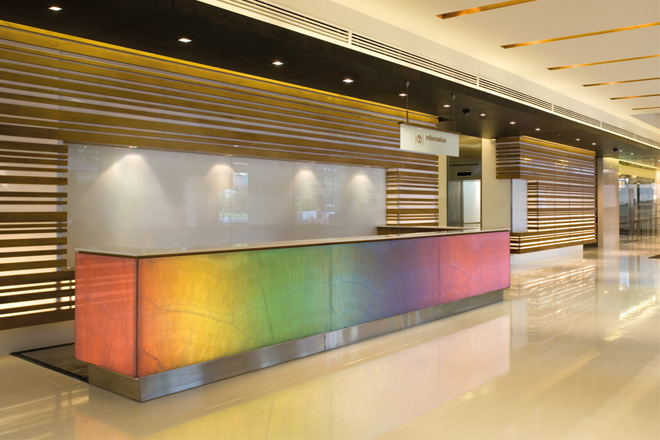As hospitality venues focus on environmentally-friendly and cost-effective lighting solutions, the transition to LED”lighting becomes more popular. Here, Jason Ford, UK controls manager at Osram, explains what to look out for – and what to avoid – when specifying LED lighting for contract projects.
Creating the perfect ambiance and mood by implementing good-quality lighting has always been an important consideration when designing the interior of any hospitality venue – but so should the impact it will have on subsequent electricity bills and the environment.
With The Carbon Trust recently reporting that energy costs for the hospitality sector are now in excess of £1.3b – resulting in carbon emissions of over 8 million tonnes – it’s not surprising that the sector is starting to push energy efficiency to the top of the agenda.
As a result, many hospitality venues are now turning towards light-emitting diodes (LED) lighting as a vital means of reducing energy costs. It makes perfect sense – these products are up to 90% more energy efficient, and offer a lower total cost of ownership than traditional lighting.
As the popularity of LED lighting increases, however, the number of substandard or even illegal LED-based products will also grow. Hospitality designers wishing to specify the latest LED products in their lighting schemes should be wary that they might not always receive the quality products they expect.
Since Europe began phasing out incandescent light bulbs in favour of higher quality and more sustainable LEDs, more than 70 substandard or even illegal LED-based products have had to be withdrawn from sale by the European Commission. These products were removed as a precautionary measure to protect buyers from potential risks, including electric shock, burns or even fire. Imagine a light fitting shocking a hotel guest or even the nightmare of a nightclub fire.
In order to protect guests and staff from such dangers, it is vital that both hospitality designers and hotel/restaurant managers are aware of the risks of substandard LED lighting. It’s not just hazardous products that present a risk – cheap LEDs which are safe but perform poorly present a financial risk of wasted investment, although perfectly legal and safe.
While the law helps to protect customers from hazardous products, hospitality managers should also be vigilant towards cheap LEDs, as many give poor performance in terms of brightness and lifespan. Therefore, any venues looking to make the transition to LED lighting should bear the following points in mind when sourcing products:
Buy reputable brands from reputable sellers
This advice is the same for individual light bulbs to complete luminaires and lighting installations. Choose a well-established company that will still be around when the warranty expires, and which continues to invest in new product innovation.
Use a reputable lighting brand
Contractors hired to install lighting solutions have a legal liability period that can be as short as 12 months – long before some substandard products can reveal themselves. Again, using a reputable lighting brand can reassure customers both during and after the liability period.
Check the product rating
Choose products with lifespan guarantees, and check that the IP ratings for products are specified for their intended use. This is particularly important where the lighting is intended for external use or where weather or water-proofing is required.
Check for the CE mark
However, be aware that even this is sometimes used fraudulently. Some substandard products carry a mark that looks a lot like the CE mark, but means China Export rather than Conformité Européenne.
About Osram
Osram is a leading, international light manufacturer, which has a product portfolio covering the entire value chain, from components – including lamps and LEDs – to electronic control gears, as well as complete luminaires, light management systems and lighting solutions. More than 70% of the company’s revenue comes from energy-efficient products.



